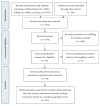Worldwide Prevalence of Small Ruminant Lentiviruses in Sheep: A Systematic Review and Meta-Analysis
- PMID: 33799908
- PMCID: PMC8000744
- DOI: 10.3390/ani11030784
Worldwide Prevalence of Small Ruminant Lentiviruses in Sheep: A Systematic Review and Meta-Analysis
Abstract
Small Ruminant Lentiviruses (SRLV) are highly prevalent retroviruses with significant genetic diversity and antigenic heterogeneity that cause a progressive wasting disease of sheep called Maedi-visna. This work provides a systematic review and meta-analysis of the last 40 years (1981-2020) of scientific publications on SRLV individual and flock prevalence. Fifty-eight publications and 314 studies were included. Most articles used a single diagnostic test to estimate prevalence (77.6%), whereas articles using three or more tests were scarce (6.9%). Serological tests are more frequently used than direct methods and ELISA has progressively replaced AGID over the last decades. SRLV infection in sheep is widespread across the world, with Europe showing the highest individual prevalence (40.9%) and being the geographical area in which most studies have been performed. Africa, Asia, and North America show values between 16.7% to 21.8% at the individual level. South and Central America show the lowest individual SRLV prevalence (1.7%). There was a strong positive correlation between individual and flock prevalence (ρ = 0.728; p ≤ 0.001). Despite the global importance of small ruminants, the coverage of knowledge on SRLV prevalence is patchy and inconsistent. There is a lack of a gold standard method and a defined sampling strategy among countries and continents.
Keywords: maedi-visna; meta-analysis; prevalence; seroprevalence; small ruminant lentiviruses.
Conflict of interest statement
The authors declare no conflict of interest.
Figures





References
-
- Pritchard G.C., McConnel I. Maedi-Visna. In: Aitken I.D., editor. Diseases of Sheep. Blackwell Publishing; Oxford, UK: 2007. pp. 217–223.
Grants and funding
LinkOut - more resources
Full Text Sources
Other Literature Sources

